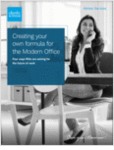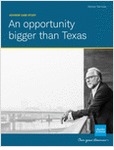What You Need to Know
- The Secure 2.0 Act expanded QLAC limits.
- High interest rates make makes QLACs and other annuities look more attractive than they have in decades, advisor Joe Opiela says.
- Clients worried about loss of liquidity could consider a QLAC with a cash refund option, he says.
The topic of rising interest rates has certainly received its fair share of attention over the past 18 months, thanks in no small part to the historically fast pace of the rate increases and the ongoing battle the U.S. Federal Reserve is fighting to contain inflation.
These broad dynamics are well understood by financial advisors and savvy investors, but in the substantial experience of Joe Opiela, wealth advisor and vice president of strategic partnerships at Schechter Wealth in Birmingham, Mich., some of the ancillary effects of higher rates haven’t been fully considered.
This includes the issuance of annuities, especially qualified longevity annuity contracts, at attractive payout rates that haven’t been seen in the better part of two decades.
“One really exciting area is QLACs,” Opiela recently told ThinkAdvisor. “I think this is a topic that should be known by all advisors, especially in the mass affluent space.”
As Opiela explains, QLACs themselves aren’t a new product. Back in 2014, the U.S. Treasury enabled the purchase of deferred income longevity annuity contracts inside of 401(k) and traditional individual retirement accounts, thereby letting consumers use what is usually their largest retirement savings vehicles to make an annuity purchase.
What is new, Opiela says, is this interest rate environment, and the current situation in the markets makes QLACs and other annuities look more attractive than they have in decades.
Why the QLAC Is So Timely
According to Opiela, reconsideration of QLACs is timely for three main reasons.
“One, as interest rates have risen dramatically, annuity payout rates are better than they have been in at least 15 years, if not longer,” Opiela says. “The second factor is the changes made by the Secure Act 2.0 legislation, which as your readers may know, specifically addressed the QLAC maximums.”
Previously, only the lesser of 25% of the aggregate account balance or $145,000 of the client’s qualified retirement funds could be deployed toward a QLAC, but that amount has been raised to $200,000. As before, investors can purchase QLACs that kick in with income starting as late as age 85.
As Opiela notes, the third factor to consider is the big challenge of addressing increasing longevity — which is a particular concern for those who are in the mass affluent and high-net-worth client segments, given their excess relative longevity compared with the U.S. population as a whole.
“Advisors will know that the worry about outliving one’s money comes up often,” Opiela says. “But you might be surprised to know that it comes up frequently even among the higher-net-worth clients we serve. It’s just a natural fear — that longevity risk and the basic fear of outliving one’s money.”








 October 24, 2023 at 04:41 PM
October 24, 2023 at 04:41 PM












 Copyright © 2024 ALM Global, LLC. All Rights Reserved.
Copyright © 2024 ALM Global, LLC. All Rights Reserved.